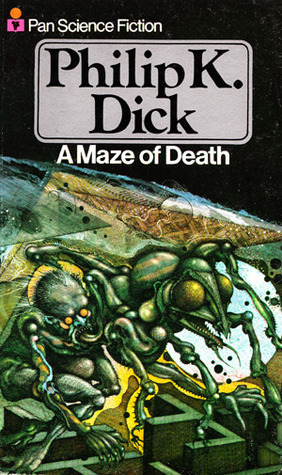What do you think?
Rate this book


190 pages, Paperback
First published July 1, 1970



"We can vote," Betty Jo Berm said. "In a democratic way. But I think we must be careful." She struggled to express herself. "We mustn't give a leader too much power. And we should be able to recall him when and if at any time we're not satisfied with him; then we can vote him out as our leader and elect someone else. But while he is leader we should obey him--we don't want him to be too weak, either. If he's too weak we'll just be like we are now: a mere collection of individuals who can't function together, even in the face of death."~ and there's a doozy of a finale twist (which then has its own added surprises).
8 Glen Belsnor ignores the warnings of his parents and embarks on a bold sea adventure.
12 Roberta Rockingham's spinster aunt pays her a visit.
"We're a friggin' mob...we have no common purpose. Interpersonal activity has been at a low ebb."
"We have one vast fear, and that is this: there is no purpose to us being here, and we'll never be able to leave...Maybe this is a prison..."

"It is , for instance, not possible to declare whether (one) he was a separate entity from God from the start, uncreated by God but also self-creating, as is God, or (two) whether the Form Destroyer is an aspect of God..."
"Specktowsky speaks about us being 'prisoners of our own preconceptions and expectations'. And that one of the conditions of the Curse is to remain mired in the quasi-reality of those proclivities. Without ever seeing reality as it actually is...Nobody sees reality as it actually is. As Kant proved. Space and time are modes of perception, for example.
"Specktowsky says that ultimately we can see reality as it is...when the Intercessor releases us from our world and condition. When the Curse is lifted from us, through him...And sometimes, even during our physical lifetime, we get momentary glimpses of it...only if the Intercessor lifts the veil for us."
"Into TENCH 889B had gone elaborated information dealing with Judaism, Christianity, Mohammedanism, Zoroastrianism, Tibetan Buddhism...a complex mass, out of which TENCH 889B was to distil a composite religion, a synthesis of every factor involved. We made it up. The Intercessor, the Mentufacturer, the Walker-on-Earth - even the ferocity of the Form Destroyer. Distillate of man's total experience with God - a tremendous logical system, a comforting web deduced by the computer from the postulates given it - in particular the postulate that God existed."

